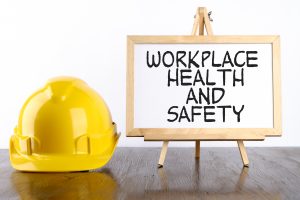
Workplace inspections help prevent injuries and illnesses while promoting safe working. Through critical examination of the workplace, inspections identify and record hazards for corrective action. Joint occupational health and safety committees plan, conduct, report and monitor inspections. Regular workplace inspections are an important part of the overall occupational health and safety program.
As an essential part of a health and safety program, a company should examine the workplace to:
Look at all workplace elements – the environment, the equipment and the process. The environment includes such hazards as noise, vibration, lighting, temperature, and ventilation. Equipment includes materials, tools and apparatus for producing a product or a service. The process involves how the worker interacts with the other elements in a series of tasks or operations.
Types of workplace hazards include:
Inspection records are important. Past inspection records show what inspectors identified. They also show what an inspection team concentrated on and what areas it did not inspect.
The inspection report can draw attention to possible hazards. However, do not simply repeat or copy previous inspections. Check the inspection report to confirm implementation of previous recommendations.
The following describes three other types of inspection reports:
Supervisors and workers repeatedly conduct ongoing inspections as part of their job responsibilities. Such inspections identify hazardous conditions and either correct them immediately or report them for corrective action. The frequency of these inspections varies with the amount and conditions of equipment use. Daily checks by users assure that the equipment meets minimum acceptable safety requirements.
Pre-operation checks involve inspections of new or modified equipment or processes. Workers often perform these after workplace shutdowns.
Periodic inspections are regular, planned checks of critical equipment or system components. These components have a high potential for causing serious injury or illness. The inspections are often part of preventive maintenance procedures or hazard control programs.
The law specifies that qualified persons inspect some types of equipment on a recurring basis. This includes elevators, boilers, pressure vessels, and fire extinguishers, at regular intervals.
The health and safety committee should review the progress of the recommendations. This is especially important when they pertain to the education and training of employees. It is also the committee’s responsibility to study the information from regular inspections. This will help in identifying trends for the maintenance of an effective health and safety program.
If you require further information please contact us.